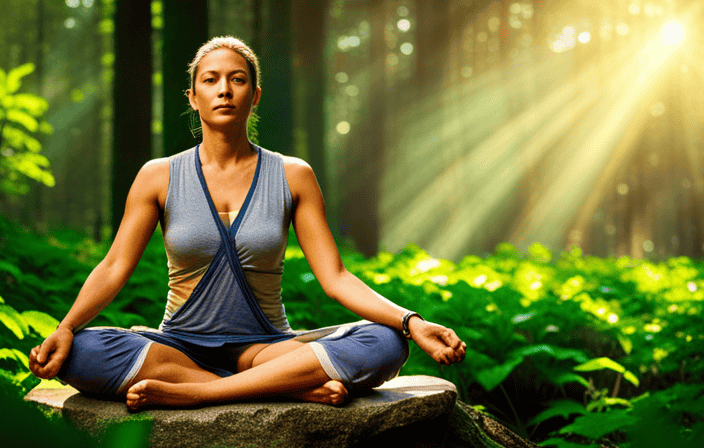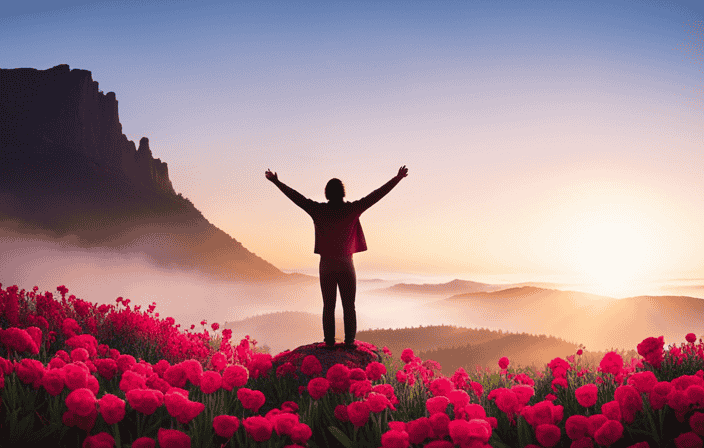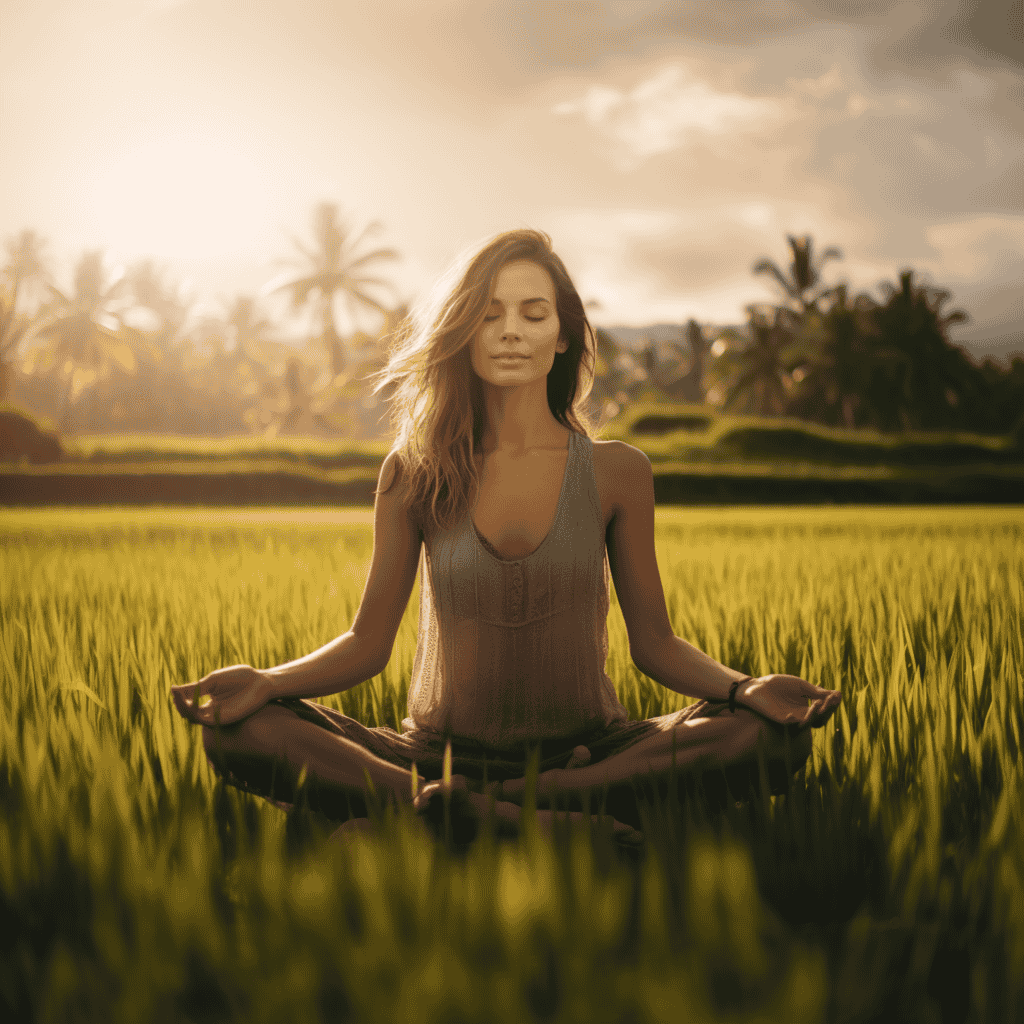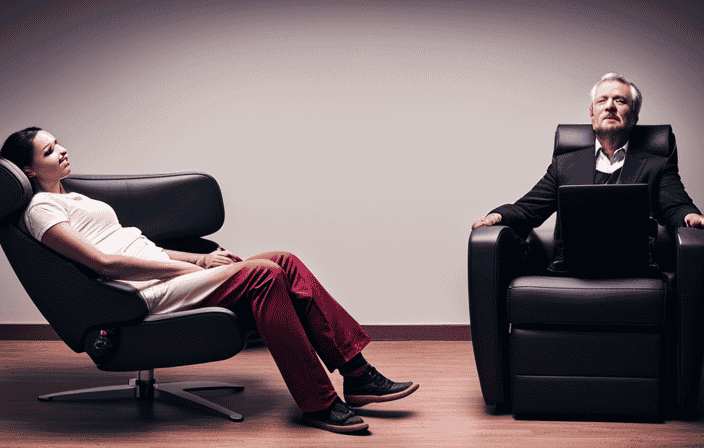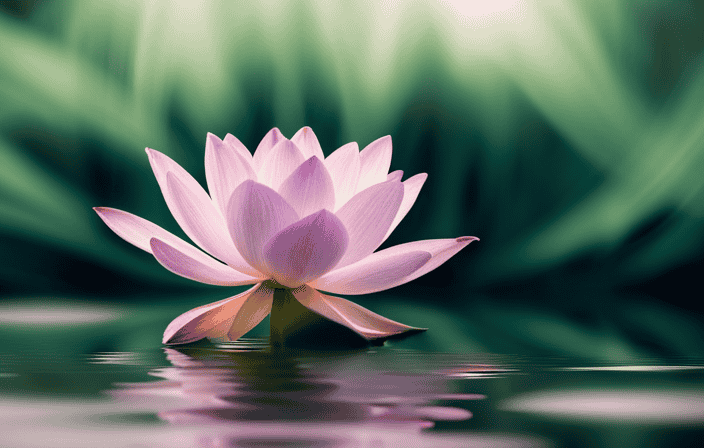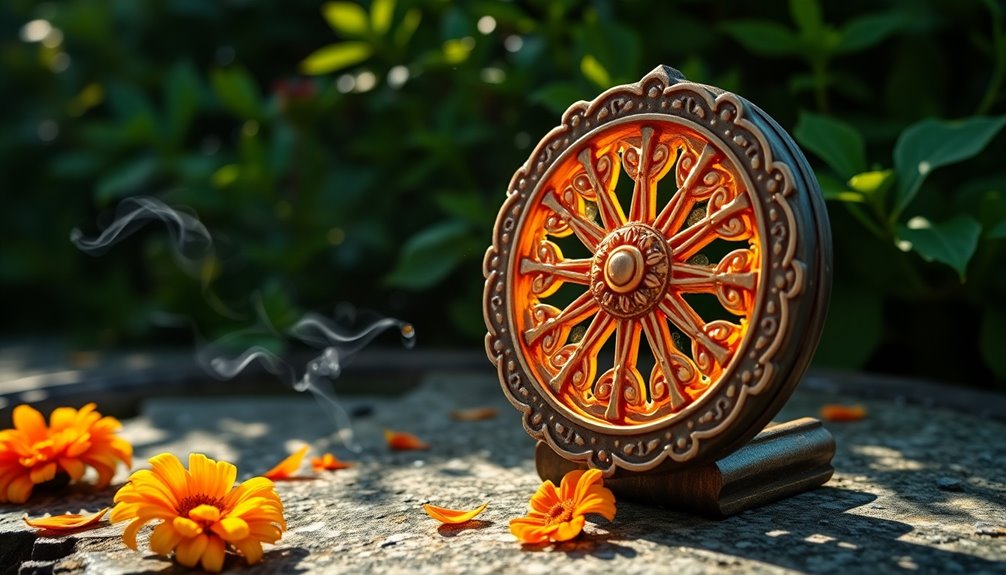Striving for a peaceful and calm state of mind, meditation requires advancing through different stages that must be mastered. Just like a skilled artist honing their craft, those who practice meditation must conquer challenges like distractions, boredom, and restlessness.
By employing techniques such as focused investigation and sustained attention, one can overcome these obstacles and experience the profound benefits of meditation.
This article delves into the stages, challenges, and techniques involved in mastering the art of meditation, offering valuable insights and resources for those seeking to embark on this transformative journey.
Key Takeaways
- The stages of meditation progress from continuous attention to tranquility and composure.
- Challenges in meditation include distractions, dullness, boredom, and doubt, which can be overcome through diligent practice.
- Techniques such as investigating objects, remaining watchful, and achieving physical pliancy can aid in mastering meditation.
- The goals and benefits of meditation include effortless attention, mastery of the mind, inner joy and pleasure, and expertise in daily life.
Stages of Meditation
The stages of meditation, including continuous attention, calming the senses, moderate intensity of meditative joy, and maintaining composure, are important milestones in the journey towards mastery of the practice. Unifying the mind and maintaining focus are key elements in these stages.
In Stage Seven, practitioners strive to achieve continuous attention, where the mind remains focused on the chosen object without wavering.
In Stage Eight, the senses are calmed down, allowing for deeper concentration and a more unified experience.
Stage Nine involves developing a moderate intensity of meditative joy, which brings happiness and pleasure to the practice.
Finally, in Stage Ten, practitioners aim to be tranquil and maintain composure even in the face of distractions.
These stages mark significant progress in meditation, leading practitioners towards the ultimate goal of mastering the art and experiencing the profound benefits it brings.
Challenges and Distractions
Despite the various obstacles and diversions that may arise during the practice of meditation, individuals must remain vigilant and focused on their chosen object of meditation in order to attain a state of deep concentration and tranquility. Overcoming distractions is crucial in maintaining a steady and focused mind.
Here are some techniques to stay focused:
-
Cultivate mindfulness: By being fully present in the moment, individuals can notice distractions as they arise and gently redirect their attention back to the object of meditation.
-
Use anchor points: Anchoring one’s attention to a specific sensation, such as the breath or a mantra, can help prevent the mind from wandering.
-
Develop mental resilience: Through diligent practice, individuals can cultivate the ability to observe distractions without becoming attached to them, allowing them to let go and return to their meditation object.
-
Create a conducive environment: Minimizing external distractions, such as noise or visual stimuli, can help promote a focused and peaceful meditation practice.
By employing these strategies, individuals can overcome distractions and develop the ability to maintain deep concentration in their meditation practice.
Achieving Tranquility
Achieving tranquility in meditation requires maintaining a focused and steady mind, which can be accomplished through cultivating mindfulness, using anchor points, developing mental resilience, and creating a conducive environment. Mindfulness techniques play a crucial role in achieving inner peace during meditation. By directing attention to the present moment, one can cultivate a deep sense of calm and tranquility. Anchor points, such as focusing on the breath or a chosen mantra, can help stabilize the mind and prevent it from wandering. Additionally, developing mental resilience is essential in overcoming distractions and challenges that may arise during meditation. This can be achieved through regular practice and gradually increasing the duration of meditation sessions. Lastly, creating a conducive environment, free from external disturbances, can greatly enhance the experience of tranquility during meditation.
| Mindfulness Techniques | Inner Peace Techniques | Benefits |
|---|---|---|
| Focusing on the breath | Visualization | Deep sense of calm |
| Body scan | Loving-kindness meditation | Reduced stress and anxiety |
| Walking meditation | Gratitude practice | Enhanced emotional well-being |
| Mantra repetition | Mindful eating | Improved concentration |
| Noting thoughts | Sound meditation | Increased self-awareness |
Benefits of Meditation
Numerous benefits arise from the regular practice of meditation, including enhanced emotional well-being, improved concentration, reduced stress and anxiety, and increased self-awareness. Meditation has been shown to have positive effects on both physical health and mental clarity.
Physically, meditation can lower blood pressure, strengthen the immune system, and reduce chronic pain. It can also improve sleep quality and promote a sense of overall well-being.
Mentally, meditation can enhance cognitive function, boost creativity, and improve memory and focus. It has also been linked to decreased symptoms of depression and improved emotional regulation.
By cultivating a state of calm and relaxation, meditation allows individuals to experience greater mental clarity and a heightened sense of self-awareness. This increased awareness can lead to a deeper understanding of oneself and the world around them, fostering personal growth and self-acceptance.
In conclusion, the benefits of meditation extend beyond the realm of mental well-being, positively impacting both physical health and mental clarity.
Progress and Milestones
The progress of meditation practice can be measured through significant milestones that enhance the transformation from a restless to a restful mind. These milestones mark the gradual development and deepening of one’s meditative abilities. While progress in meditation is not linear and individuals may move back and forth between stages, there are notable indicators of advancement. Overcoming obstacles is an essential part of this journey, and it requires diligent practice and the cultivation of mental faculties. Consistency is key in meditation practice, as it allows for the sustained development of attention, mindfulness, joy, and tranquillity in daily life. Mastery of meditation brings about effortless continuous attention, a clear mind, inner light, inner sounds, pleasure, and comfort. With patience and diligence, it is possible to achieve mastery within a year or even a few months.
| Measuring Progress | Overcoming Obstacles |
|---|---|
| Milestones | Investigate objects |
| Progress indicators | Watchfulness and focus |
| Non-linear development | Overcoming boredom and doubt |
| Consistency in practice | Sustaining exclusive attention |
Time and Consistency
Time and consistency play a crucial role in the development and deepening of one’s meditation practice. In order to progress through the stages of meditation and overcome the challenges, it is important to allocate dedicated time for practice and maintain a consistent routine.
Effective time management allows for a regular meditation schedule, ensuring that it becomes a priority in daily life. Consistency in practice helps to train the mind and establish a habit of meditation, allowing for a deeper level of focus and concentration.
Additionally, maintaining motivation is essential in sustaining a consistent practice. Setting realistic goals, finding inspiration from experienced practitioners, and reminding oneself of the benefits of meditation can help to stay motivated and committed to the practice.
Recommended Resources
A variety of resources are available to support individuals in deepening their understanding and practice of meditation. These resources offer valuable insights and techniques to help individuals navigate the stages, challenges, and techniques of meditation.
Comprehensive meditation guides, such as ‘The Mind Illuminate’ by Culadasa, provide a step-by-step approach to mastering the art of meditation.
For individuals seeking effective healing techniques, resources like ‘The Most Effective Healing Meditation Techniques’ offer valuable practices to promote physical and mental well-being.
Exploration of mindfulness and noise allows individuals to deepen their understanding of the mind and its relationship to external stimuli.
Expert reviews on yoga pants for men provide guidance on choosing comfortable attire for meditation.
Lastly, the integration of Buddhist wisdom and brain science offers a unique perspective on mindfulness, combining ancient teachings with modern scientific findings for a holistic approach to meditation.
By utilizing these recommended resources and integrating mindfulness into their lives, individuals can enhance their meditation practice and experience the numerous benefits it brings.
Progress in meditation can be influenced by various factors, including the consistency of one’s practice and the role of mental faculties in overcoming obstacles.
Mental focus plays a crucial role in the development of meditation skills. It involves the ability to direct and sustain attention on a chosen object or anchor, such as the breath or a mantra. By cultivating mental focus, individuals can deepen their meditation practice and experience the benefits of increased clarity and calmness.
Mindfulness techniques are also essential in mastering the art of meditation. These techniques involve cultivating present-moment awareness and non-judgmental observation of thoughts, emotions, and bodily sensations. By practicing mindfulness, individuals can develop a greater capacity to stay present and become more attuned to their inner experiences, leading to a deeper sense of self-awareness and insight.
Frequently Asked Questions
What are some common physical sensations experienced during meditation?
Common physical sensations experienced during meditation include relaxation, a decrease in muscle tension, a slowing of the breath and heart rate, a sense of lightness or heaviness in the body, and a feeling of warmth or coolness. These sensations can contribute to the overall benefits of meditation, such as increased calmness, improved focus, and reduced stress.
How can I incorporate meditation into my daily routine?
Incorporating meditation into your daily routine can have numerous benefits, including increased focus, reduced stress, and improved overall well-being. By practicing mindfulness during work, you can enhance productivity and maintain a sense of calm amidst daily challenges.
Are there any specific breathing techniques that can enhance the meditation experience?
Breath control and deep breathing are commonly used techniques to enhance the meditation experience. They help to calm the mind, relax the body, and increase focus and awareness. These techniques promote a sense of tranquility and can deepen the meditative state.
Can meditation help with managing stress and anxiety?
Meditation, like a soothing balm, offers relief from stress and anxiety. By practicing specific techniques such as focused attention and mindfulness, it enables individuals to cultivate a calm and centered state of mind, promoting emotional well-being and resilience.
What are some tips for dealing with restlessness or racing thoughts during meditation?
To deal with restlessness during meditation and overcome racing thoughts, it is helpful to focus on the breath or a specific object, practice mindfulness to acknowledge and let go of thoughts, and cultivate patience and non-judgmental awareness.
Conclusion
In conclusion, mastering the art of meditation requires dedication, patience, and consistent practice. The stages of meditation, including continuous attention, calming the senses, and experiencing meditative joy, provide a roadmap for progress.
However, practitioners may face challenges such as distractions and boredom, which can be overcome through techniques like investigating objects with focus and remaining watchful.
Achieving tranquility and inner light, pleasure, and comfort are the ultimate goals of meditation. Progress is not linear, but with diligence, expertise can be achieved within a year or a few months.
Additional resources, such as books and articles, can provide comprehensive guidance in this journey. Just like a gentle breeze guiding us through the stages of meditation, the practice can bring a sense of peace and clarity to our lives.
